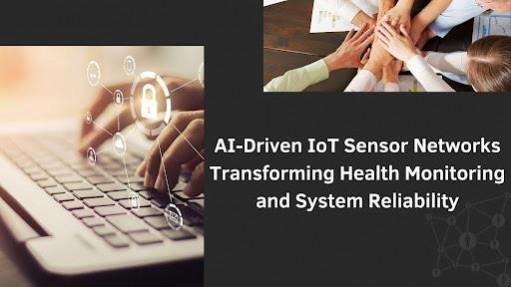
In the era of digital transformation, Artificial Intelligence (AI) is redefining the capabilities of distributed IoT sensor networks, making them more reliable, efficient, and secure. Independent researcher Gaurav Naresh Mittal delves into these advancements, emphasizing AI's role in network management, predictive maintenance, and energy optimization. His research highlights how AI-driven innovations are tackling critical challenges in IoT-based health monitoring and industrial automation, paving the way for smarter, more resilient systems.
Enhancing Anomaly Detection for Real-Time Monitoring
One of the most impactful AI applications in IoT sensor networks is anomaly detection. By leveraging deep learning models, sensor networks can identify irregularities in real-time, reducing false positives and improving detection accuracy. AI-powered systems can process vast streams of sensor data, enabling a proactive approach to diagnosing faults and preventing failures before they escalate. This advancement is particularly crucial in healthcare, where precise monitoring ensures timely intervention and better patient outcomes.
Predictive Maintenance: Minimizing Downtime and Costs
AI-driven predictive maintenance minimizes downtime and costs by analyzing historical sensor data to predict failures. Using deep and reinforcement learning, IoT systems accurately forecast malfunctions, enabling timely interventions that extend equipment lifespan, reduce unplanned outages, and optimize resource allocation.
Automated Calibration for Higher Accuracy
AI-driven automated calibration systems enhance sensor accuracy by dynamically adjusting configurations to environmental changes. These intelligent mechanisms reduce manual intervention, minimize downtime, and ensure optimal performance. By leveraging AI, organizations achieve greater measurement consistency, improved reliability, and lower operational costs, making industrial applications more efficient and precise.
Optimizing Network Performance through AI-Driven Fault Tolerance
AI-driven fault tolerance enhances IoT network resilience by using multi-layered mesh architectures to maintain connectivity during failures. These systems optimize load distribution, minimize packet loss, and ensure high availability, making them crucial for mission-critical applications like healthcare and industrial automation.
Energy-Efficient Network Management
AI-driven optimization enhances energy efficiency in IoT networks by dynamically adjusting power consumption through hybrid protocols. Clustering algorithms ensure uniform energy distribution, extending sensor lifespan, reducing costs, and enabling sustainable operations while preventing premature node failures for long-term network reliability.
Federated Learning: Advancing Data Privacy and Security
As IoT deployments expand, ensuring data privacy becomes increasingly challenging. Federated learning addresses this concern by enabling AI model training across multiple nodes without centralizing sensitive data. This approach enhances privacy while maintaining high detection accuracy for security threats. AI-powered federated learning systems significantly reduce communication overhead, making them ideal for large-scale IoT networks with stringent privacy requirements.
Digital Twins: Bridging Physical and Virtual Worlds
AI-powered digital twins revolutionize real-time monitoring and predictive analytics by replicating physical assets. They enhance simulations, optimize workflows, cut maintenance costs, and improve decision-making, boosting efficiency and minimizing operational risks across industries.
Edge-Cloud Integration for Scalable IoT Solutions
Edge-cloud integration enhances real-time IoT data processing by reducing latency and optimizing resource utilization. AI-driven workload distribution improves bandwidth efficiency, enabling scalable, responsive solutions for smart healthcare, industrial automation, and other real-time applications.
Overcoming Challenges: Data Quality and Security Concerns
Ensuring AI-driven decisions require high-quality data and robust validation. AI-powered intrusion detection secures IoT networks against cyber threats, while strong security protocols and device interoperability are vital for long-term resilience.
In conclusion, the fusion of AI and IoT sensor networks is revolutionizing multiple industries by enhancing efficiency, security, and predictive capabilities. As highlighted by Gaurav Naresh Mittal, AI-driven advancements in anomaly detection, predictive maintenance, and energy management are reshaping the way sensor networks function. While challenges related to data integrity and security remain, continuous AI innovations are driving the development of more reliable and intelligent IoT systems. The future of sensor networks lies in AI's ability to optimize performance, reduce operational costs, and enable real-time, data-driven decision-making.














